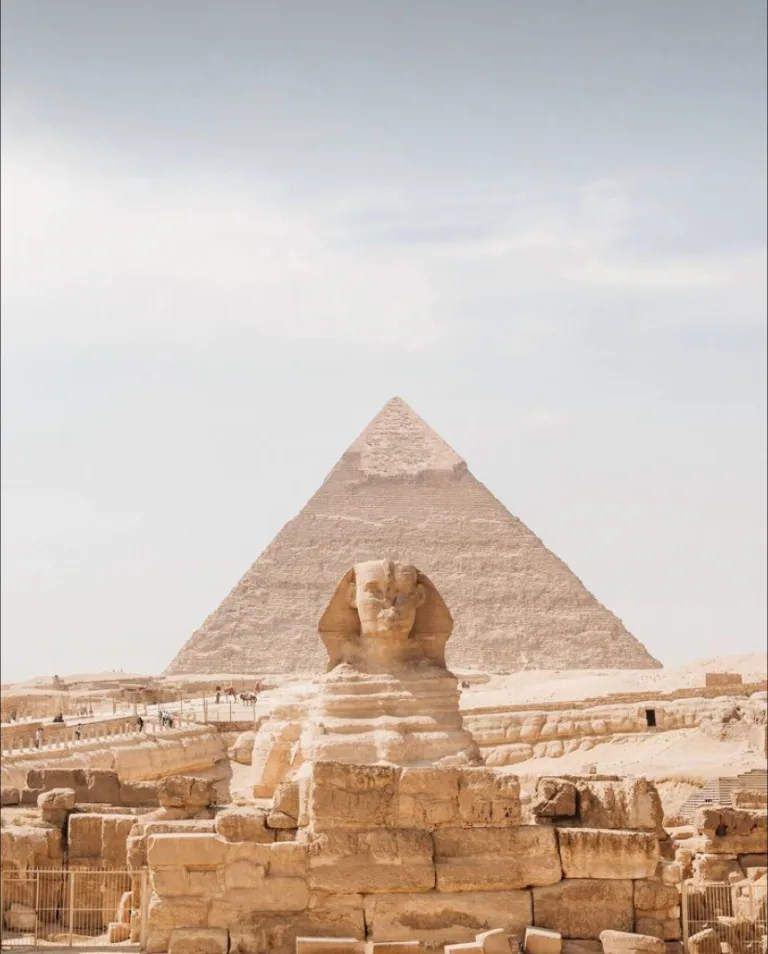Ten countries that have the richest history in the world are:
1.Egypy
2.Greece
3.Italy
4.China
5.India
6.Iran
7.Turkey
8.Iraq
9.Mexico
10.United Kingdom
1.Egypt
Egypt is a country with the richest histories in the world, known for its ancient civilization, monumental architecture, and significant contributions to art, science, and culture.
Ancient Civilization
- Pharaonic Era: The civilization of ancient Egypt, which began around 3100 BCE, is one of the oldest and most influential in human history. It is renowned for its impressive achievements in various fields, including architecture, art, and writing.
- Monuments and Architecture: Egypt is home to some of the most iconic monuments in the world, including the Pyramids of Giza, the Great Sphinx, and the temples of Luxor and Karnak. These structures showcase the architectural ingenuity and engineering prowess of ancient Egyptians.
- Hieroglyphics: The development of hieroglyphic writing was a major advancement in human communication. The Rosetta Stone, discovered in 1799, was crucial in deciphering these ancient symbols, unlocking vast amounts of knowledge about Egypt’s history and culture.
Cultural Contributions
- Art and Sculpture: Ancient Egyptian art and sculpture are characterized by their distinct style, symbolism, and adherence to strict conventions. Wall paintings, statues, and carvings often depicted gods, pharaohs, and scenes of daily life, reflecting the beliefs and practices of the time.
- Mathematics and Science: The ancient Egyptians made significant contributions to mathematics, astronomy, and medicine. They developed a calendar based on the lunar and solar cycles, practiced advanced medical techniques, and built complex irrigation systems to manage the Nile’s flooding.
- Religion and Mythology: Egyptian religion and mythology were central to the civilization’s culture. The pantheon of gods and goddesses, elaborate burial practices, and beliefs in the afterlife had a profound influence on their art, architecture, and daily life.
Historical Periods
- Old, Middle, and New Kingdoms: Egyptian history is traditionally divided into three major periods: the Old Kingdom (known for the construction of the Pyramids), the Middle Kingdom (a time of political stability and cultural flourishing), and the New Kingdom (the height of Egypt’s power and expansion, marked by rulers like Hatshepsut, Akhenaten, and Ramses II).
- Ptolemaic and Roman Periods: Following the conquest by Alexander the Great, Egypt was ruled by the Ptolemaic dynasty, which blended Greek and Egyptian cultures. The famous queen Cleopatra VII was the last of the Ptolemaic rulers. Egypt later became a province of the Roman Empire, further influencing its culture and society.
Modern Egypt
- Islamic Influence: With the Arab conquest in the 7th century, Egypt became a major center of Islamic culture and learning. Cairo, founded in 969 CE, became a vibrant metropolis with impressive Islamic architecture, including mosques, madrasas, and palaces.
- Cultural Heritage: Modern Egypt continues to celebrate and preserve its rich cultural heritage. Museums such as the Egyptian Museum in Cairo house vast collections of artifacts, and ongoing archaeological discoveries continue to shed light on Egypt’s ancient past.
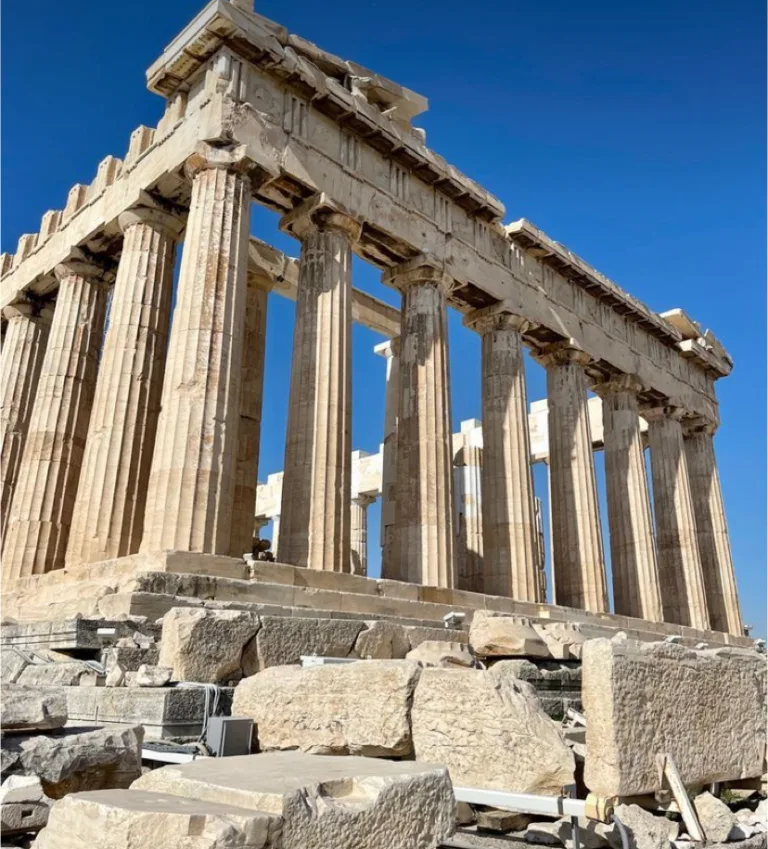
2.Greece
Greece is one of the countries with the richest histories in the world. Its historical significance spans thousands of years and has had a profound influence on Western civilization.
Ancient Civilization
- Ancient Greece: Ancient Greece, dating back to the 8th century BCE, is often regarded as the cradle of Western civilization. It is renowned for its advancements in philosophy, science, politics, and the arts.
- Philosophy and Thought: Greece was home to some of the greatest philosophers in history, including Socrates, Plato, and Aristotle. Their ideas on ethics, metaphysics, politics, and logic have shaped Western thought and intellectual traditions.
- Democracy: Ancient Athens is credited with developing one of the earliest forms of democracy, where citizens had the opportunity to participate directly in decision making processes. This political system has greatly influenced modern democratic practices.
Cultural Contributions
- Literature and Drama: Greek literature has had a lasting impact on Western culture. Epic poems like Homer’s “Iliad” and “Odyssey,” as well as the works of playwrights such as Sophocles, Euripides, and Aristophanes, are foundational texts in Western literature.
- Art and Sculpture: Greek art and sculpture are renowned for their beauty, realism, and innovation. The classical ideals of proportion and harmony are evident in famous works like the Parthenon, the sculptures of Phidias, and the Venus de Milo.
- Mythology: Greek mythology, with its pantheon of gods, heroes, and mythological creatures, has profoundly influenced literature, art, and culture throughout the centuries. Myths such as those of Zeus, Hercules, and the Trojan War continue to be retold and reinterpreted.
Historical Periods
- Classical Period: The Classical Period (5th-4th centuries BCE) is marked by the flourishing of Athenian democracy, significant advancements in art and philosophy, and the establishment of foundational political and cultural institutions.
- Hellenistic Period: Following the conquests of Alexander the Great, the Hellenistic Period (323-31 BCE) saw the spread of Greek culture across a vast empire that included Egypt, Persia, and parts of India. This period was characterized by a blending of Greek and Eastern cultures and significant advancements in science and art.
- Byzantine Empire: After the fall of the Western Roman Empire, Greece became a central part of the Byzantine Empire. The Byzantine period (4th-15th centuries CE) saw the continuation of Greek culture and the spread of Orthodox Christianity, with significant achievements in art, architecture, and theology.
Modern Greece
- War of Independence: In the 19th century, Greece fought a successful war of independence against the Ottoman Empire, leading to the establishment of the modern Greek state in 1830.
- Cultural Revival: Modern Greece continues to celebrate its rich cultural heritage through the preservation of ancient sites, museums, and cultural festivals. The Greek Orthodox Church also plays a significant role in the cultural and spiritual life of the country.
- Ongoing Influence: Greek culture, philosophy, and political ideals continue to influence contemporary thought, education, and cultural practices worldwide. Modern Greece, with its vibrant traditions, cuisine, and arts, remains a vital part of the global cultural landscape.
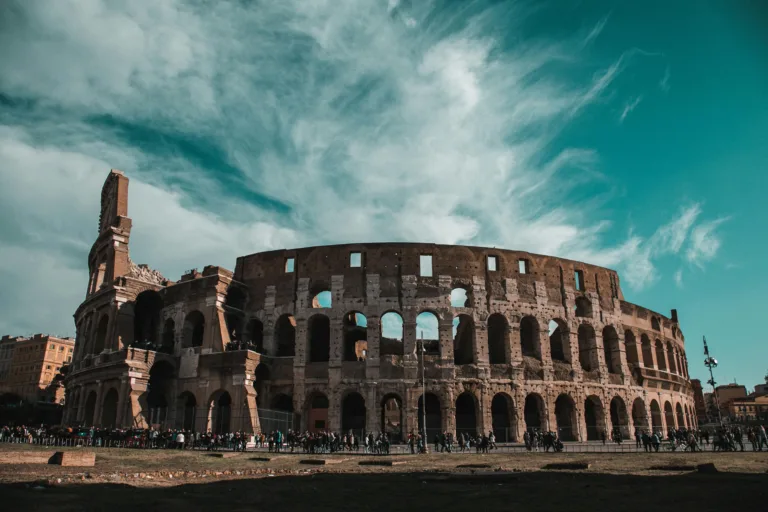
3.Italy
Italy is undoubtedly one of the countries with the richest histories in the world. Its historical significance spans from ancient civilizations through the Renaissance to modern times, influencing many aspects of global culture, politics, and art.
Ancient Rome
- Roman Republic and Empire: Italy was the heart of the Roman Republic (509-27 BCE) and later the Roman Empire (27 BCE-476 CE), one of the most powerful and enduring civilizations in history. Rome’s legal, political, and social systems laid the groundwork for many modern Western institutions.
- Architecture and Engineering: The Romans were master builders, known for their engineering marvels like the Colosseum, aqueducts, roads, and the Pantheon. These structures showcased advanced techniques and continue to be studied and admired.
- Latin Literature and Philosophy: Latin, the language of Rome, produced a vast body of literature and philosophy. Works by authors such as Virgil, Ovid, Cicero, and Seneca have had a lasting impact on Western literary and intellectual traditions.
Renaissance
- Cultural Rebirth: The Renaissance, which began in Italy in the 14th century, marked a period of renewed interest in classical learning and values. It was a time of extraordinary artistic and intellectual achievements, with Italy at its center.
- Art and Artists: Italian Renaissance art is renowned worldwide. Artists like Leonardo da Vinci, Michelangelo, Raphael, and Titian created masterpieces that revolutionized artistic techniques and aesthetics. Their works remain some of the most celebrated in art history.
- Science and Innovation: The Renaissance was also a time of scientific discovery and innovation. Figures such as Galileo Galilei made groundbreaking contributions to astronomy, physics, and other sciences, challenging prevailing views and laying the foundations for modern science.
Middle Ages
- Medieval States: After the fall of the Roman Empire, Italy was divided into various kingdoms, duchies, and city states, including the Papal States, the Republic of Venice, the Kingdom of Naples, and others. These entities played significant roles in European politics and culture.
- Scholasticism and Universities: Italy was a center for scholastic thought and education during the Middle Ages. The University of Bologna, founded in 1088, is the oldest university in continuous operation and played a crucial role in the development of Western higher education.
Modern Italy
- Unification: The 19th century saw the unification of Italy, a complex process involving various states and territories coming together to form the Kingdom of Italy in 1861, led by figures such as Giuseppe Garibaldi and Count Camillo di Cavour.
- Cultural Influence: Modern Italy continues to be a cultural powerhouse, influencing global fashion, cuisine, design, and cinema. Italian cuisine, with its regional diversity, is celebrated worldwide, and Italian designers and filmmakers are renowned for their creativity and innovation.
- Heritage and Preservation: Italy is home to a vast number of UNESCO World Heritage sites, reflecting its rich cultural and historical heritage. Cities like Rome, Florence, Venice, and Milan attract millions of visitors each year, eager to experience Italy’s historical and cultural treasures.

4.China
China is one of the countries with the richest histories in the world. Its long and continuous history, spanning thousands of years, has significantly influenced global culture, politics, technology, and philosophy.
Ancient Civilizations
- Early Dynasties: China’s history dates back to ancient times, with early dynasties such as the Xia (c. 2070–1600 BCE), Shang (c. 1600–1046 BCE), and Zhou (c. 1046–256 BCE) marking the beginnings of Chinese civilization. These periods saw the development of writing, bronze casting, and early urbanization.
- Qin and Han Dynasties: The Qin Dynasty (221–206 BCE) unified China for the first time, establishing centralized imperial rule and standardizing weights, measures, and writing systems. The Han Dynasty (206 BCE–220 CE) expanded China’s boundaries, developed the Silk Road, and saw significant advancements in science, technology, and culture.
Cultural and Philosophical Contributions
- Confucianism and Daoism: Chinese philosophy has profoundly influenced East Asian culture and thought. Confucianism, founded by Confucius, emphasizes morality, social harmony, and filial piety. Daoism, associated with Laozi, focuses on living in harmony with the Dao (the Way) and values simplicity and naturalness.
- Buddhism: Introduced to China from India during the Han Dynasty, Buddhism became a major religious and cultural force. It influenced Chinese art, literature, philosophy, and architecture, with notable developments during the Tang Dynasty (618–907 CE).
Technological and Scientific Achievements
- Four Great Inventions: China is credited with the Four Great Inventions that had a profound impact on the world: papermaking, printing, gunpowder, and the compass. These innovations facilitated cultural exchange, exploration, and the spread of knowledge.
- Advancements in Various Fields: Chinese scholars made significant contributions to astronomy, mathematics, medicine, and engineering. Notable figures include Zhang Heng, who invented the seismoscope, and Sun Simiao, a famous physician.
Imperial Dynasties and Cultural Flourishing
- Tang and Song Dynasties: The Tang Dynasty (618–907 CE) is often considered a golden age of Chinese culture, marked by advancements in poetry, painting, and cosmopolitanism. The Song Dynasty (960–1279 CE) saw further cultural and technological progress, including the development of movable type printing and the compass.
- Ming and Qing Dynasties: The Ming Dynasty (1368–1644 CE) is known for its maritime explorations led by Admiral Zheng He and the construction of the Forbidden City in Beijing. The Qing Dynasty (1644–1912 CE), the last imperial dynasty, expanded China’s territory to its greatest extent and saw significant cultural and economic development.
Modern History and Influence
- Republic of China and People’s Republic of China: The early 20th century saw the fall of the Qing Dynasty and the establishment of the Republic of China. In 1949, the People’s Republic of China was founded, leading to significant political, social, and economic changes.
- Economic Growth and Global Influence: In recent decades, China has undergone rapid economic growth and modernization, becoming a major global economic power. Its cultural influence continues to expand through literature, cinema, cuisine, and technology.
Cultural Heritage and Preservation
- UNESCO World Heritage Sites: China is home to numerous UNESCO World Heritage Sites, including the Great Wall, the Terracotta Army, the Forbidden City, and the Classical Gardens of Suzhou. These sites reflect the country’s rich historical and cultural heritage.
- Cultural Festivals and Traditions: Traditional Chinese festivals, such as the Spring Festival (Chinese New Year), the Mid-Autumn Festival, and the Dragon Boat Festival, are celebrated both in China and worldwide, highlighting the enduring cultural traditions of the Chinese people.
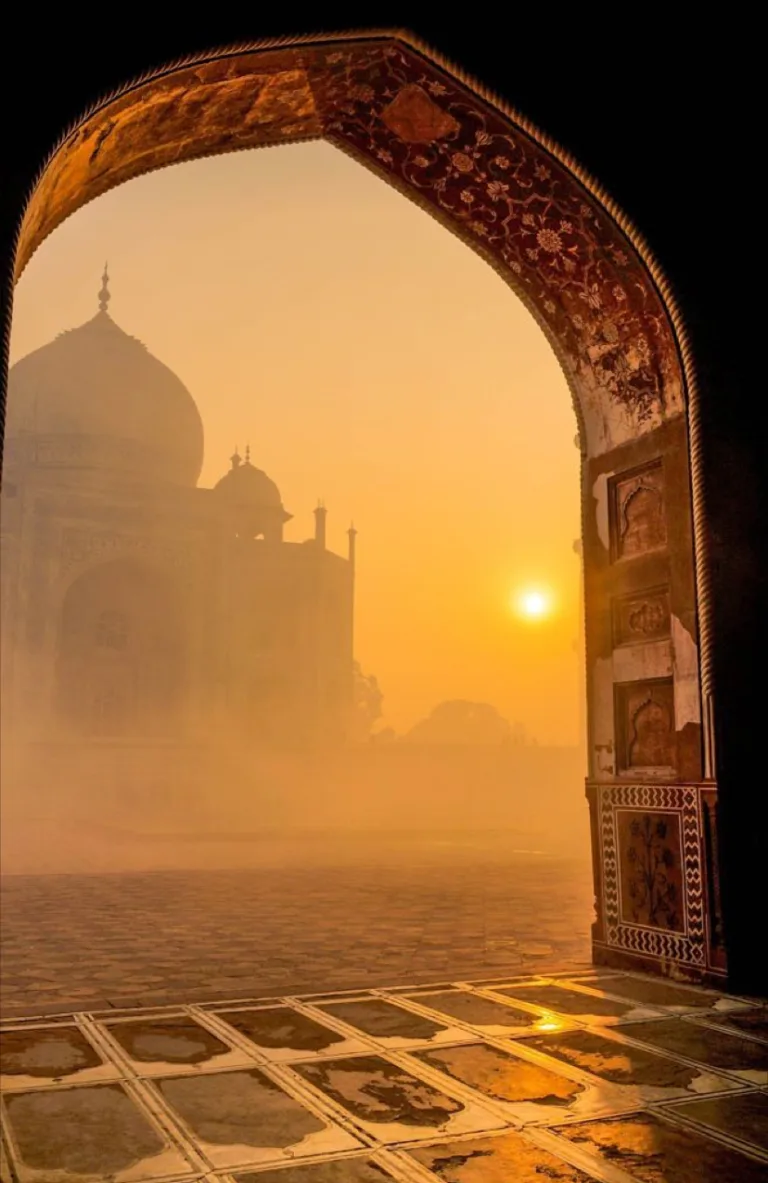
5.India
India is one of the countries with the richest histories in the world. Its long and continuous history, dating back thousands of years, has profoundly influenced global culture, philosophy, religion, and science.
Ancient Civilizations
- Indus Valley Civilization: One of the world’s earliest urban cultures, the Indus Valley Civilization (c. 3300–1300 BCE), flourished in the northwestern regions of South Asia. It is known for its advanced urban planning, architecture, and social organization, with major sites including Harappa and Mohenjo-Daro.
- Vedic Period: Following the decline of the Indus Valley Civilization, the Vedic Period (c. 1500–500 BCE) saw the composition of the Vedas, ancient texts that are the foundation of Hinduism. This era laid the groundwork for Indian culture, religion, and social structure.
Religious and Philosophical Contributions
- Hinduism: India is the birthplace of Hinduism, one of the oldest religions in the world. Key texts such as the Upanishads, Mahabharata, Ramayana, and Bhagavad Gita have had a profound influence on Indian and global spirituality and philosophy.
- Buddhism and Jainism: India is also the birthplace of Buddhism and Jainism, which emerged in the 6th century BCE. Buddha (Siddhartha Gautama) and Mahavira, the founders of Buddhism and Jainism respectively, taught principles of non-violence, meditation, and renunciation that spread across Asia and influenced global thought.
Empires and Dynasties
- Maurya and Gupta Empires: The Maurya Empire (322–185 BCE), under leaders like Chandragupta Maurya and Ashoka, unified much of the Indian subcontinent and promoted Buddhism. The Gupta Empire (c. 320–550 CE) is often regarded as a golden age of Indian culture, with significant advancements in science, mathematics, astronomy, literature, and art.
- Medieval Period: The medieval period saw the rise of powerful kingdoms and empires such as the Chola, Vijayanagara, and Mughal Empires. The Mughal Empire (1526–1857 CE) particularly influenced Indian culture, architecture (e.g., the Taj Mahal), and administration.
Cultural and Scientific Achievements
- Mathematics and Science: Ancient and medieval India made significant contributions to mathematics, including the concept of zero, the decimal system, and advanced algebra and trigonometry. Scholars like Aryabhata, Brahmagupta, and Bhaskara II made groundbreaking discoveries in astronomy and mathematics.
- Literature and Art: India’s literary heritage includes classical Sanskrit literature, Tamil Sangam poetry, and later medieval works in various regional languages. Indian art, including sculpture, painting, and architecture, has a distinct style and profound symbolism, influencing cultures across Asia.
Modern History and Independence
- British Colonial Rule: India was colonized by the British East India Company in the 18th century and later became a British colony. This period saw significant socio-economic changes, resistance movements, and the eventual struggle for independence.
- Indian Independence Movement: Leaders like Mahatma Gandhi, Jawaharlal Nehru, and Subhas Chandra Bose played crucial roles in India’s struggle for independence, employing strategies like non-violent resistance and civil disobedience. India gained independence from British rule on August 15, 1947.
Contemporary India
- Economic and Technological Growth: Since independence, India has made significant strides in economic development, technology, and education. It is now one of the world’s largest economies and a major player in global technology and innovation.
- Cultural Influence: India continues to have a profound cultural influence globally through its cuisine, cinema (Bollywood), music, dance, and literature. Indian festivals such as Diwali, Holi, and Navratri are celebrated worldwide.
Cultural Heritage and Preservation
- UNESCO World Heritage Sites: India is home to numerous UNESCO World Heritage Sites, including historical monuments, ancient temples, and natural reserves. Sites like the Qutub Minar, Red Fort, and the Western Ghats reflect the country’s rich cultural and natural heritage.
- Diverse Traditions: India’s cultural diversity is evident in its myriad languages, traditions, and customs. Each region has its own unique cultural identity, contributing to the country’s rich tapestry of traditions and practices.
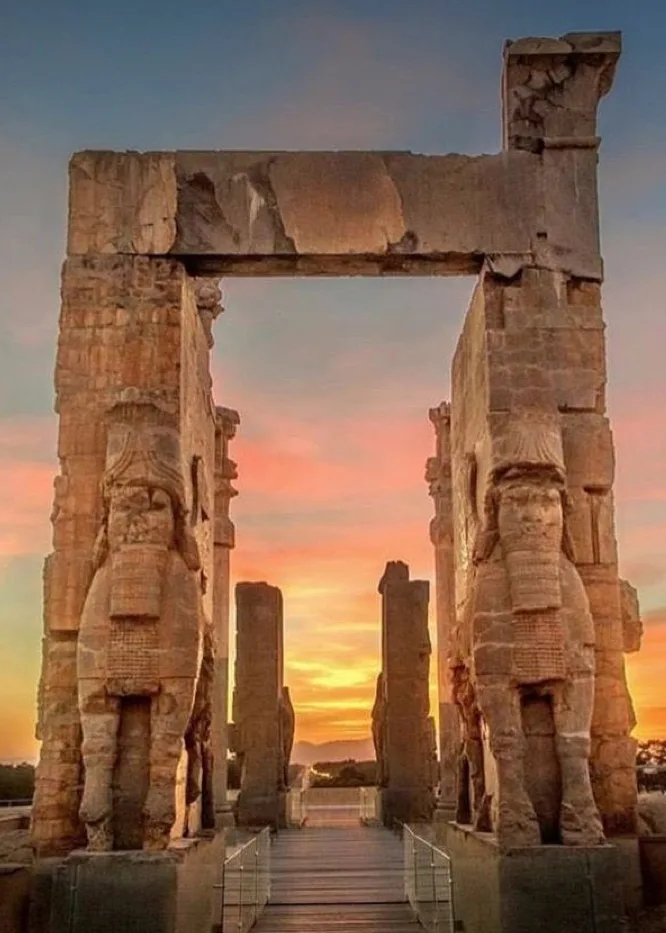
6.Iran
Iran, historically known as Persia, is one of the countries with the richest histories in the world. Its extensive and diverse historical legacy has profoundly influenced global culture, art, science, and politics.
Ancient Civilizations
- Elamite Civilization: One of the earliest civilizations in the region, the Elamites (c. 2700–539 BCE) established urban centers and contributed to the development of writing and administration in ancient Iran.
- Achaemenid Empire: Founded by Cyrus the Great in 550 BCE, the Achaemenid Empire was the first Persian Empire and one of the largest empires in history. It is known for its impressive administration, monumental architecture (such as Persepolis), and the establishment of the Royal Road for communication across the empire.
Cultural and Philosophical Contributions
- Zoroastrianism: One of the world’s oldest monotheistic religions, Zoroastrianism, originated in Persia. Founded by the prophet Zoroaster (Zarathustra), it introduced concepts of dualism, heaven and hell, and the struggle between good and evil, influencing later Abrahamic religions.
- Persian Literature and Poetry: Persian literature is renowned for its rich tradition of poetry and prose. Figures like Ferdowsi, Hafez, Rumi, and Saadi have made lasting contributions to world literature, with works such as the “Shahnameh” (Book of Kings) and “Divan-e Hafez.”
Empires and Dynasties
- Parthian and Sassanian Empires: The Parthian Empire (247 BCE–224 CE) and the Sassanian Empire (224–651 CE) were significant Persian dynasties that maintained Persian cultural and political influence. The Sassanian period is noted for its achievements in art, architecture, and the spread of Zoroastrianism.
- Islamic Conquest and Caliphates: Following the Islamic conquest in the 7th century, Persia became a key region in the Islamic world. The Abbasid Caliphate (750–1258 CE) saw the flourishing of Persian culture and scholarship in cities like Baghdad, which became centers of learning and culture.
Cultural and Scientific Achievements
- Golden Age of Persian Science: During the Islamic Golden Age, Persian scholars made significant contributions to various fields, including mathematics, astronomy, medicine, and philosophy. Notable figures include Avicenna (Ibn Sina), whose works in medicine and philosophy were influential in both the Islamic world and Europe.
- Art and Architecture: Persian art and architecture are distinguished by intricate designs, beautiful gardens, and impressive structures such as mosques and palaces. The use of elaborate tile work, calligraphy, and Persian carpets are hallmark features of Persian aesthetics.
Modern History and Influence
- Safavid and Qajar Dynasties: The Safavid Dynasty (1501–1736 CE) established Shia Islam as the state religion and fostered a cultural renaissance in art, architecture, and literature. The Qajar Dynasty (1789–1925 CE) continued to develop Persian arts and culture while grappling with internal and external challenges.
- Pahlavi Dynasty and Modernization: The Pahlavi Dynasty (1925–1979 CE) embarked on significant modernization efforts, including infrastructure development and social reforms. However, these changes, combined with political repression, led to growing discontent.
Islamic Republic and Contemporary Influence
- 1979 Revolution: The Iranian Revolution of 1979 led to the establishment of the Islamic Republic of Iran, which brought significant changes in governance, society, and international relations. The revolution emphasized Islamic principles and sought to reduce Western influence.
- Cultural Continuity and Global Impact: Despite political changes, Iran has maintained its rich cultural heritage. Persian literature, cinema, music, and art continue to be influential both domestically and internationally. Iranian filmmakers, poets, and artists are celebrated worldwide for their creativity and contributions to global culture.
Cultural Heritage and Preservation
- UNESCO World Heritage Sites: Iran is home to numerous UNESCO World Heritage Sites, including Persepolis, the ruins of the ancient city of Pasargadae, and the historic bazaars of Tabriz and Isfahan. These sites reflect the country’s rich historical and cultural legacy.
- Diverse Traditions: Iran’s cultural diversity is evident in its various ethnic groups, languages, and traditions. Each region has its own unique cultural practices, contributing to the country’s rich tapestry of heritage.
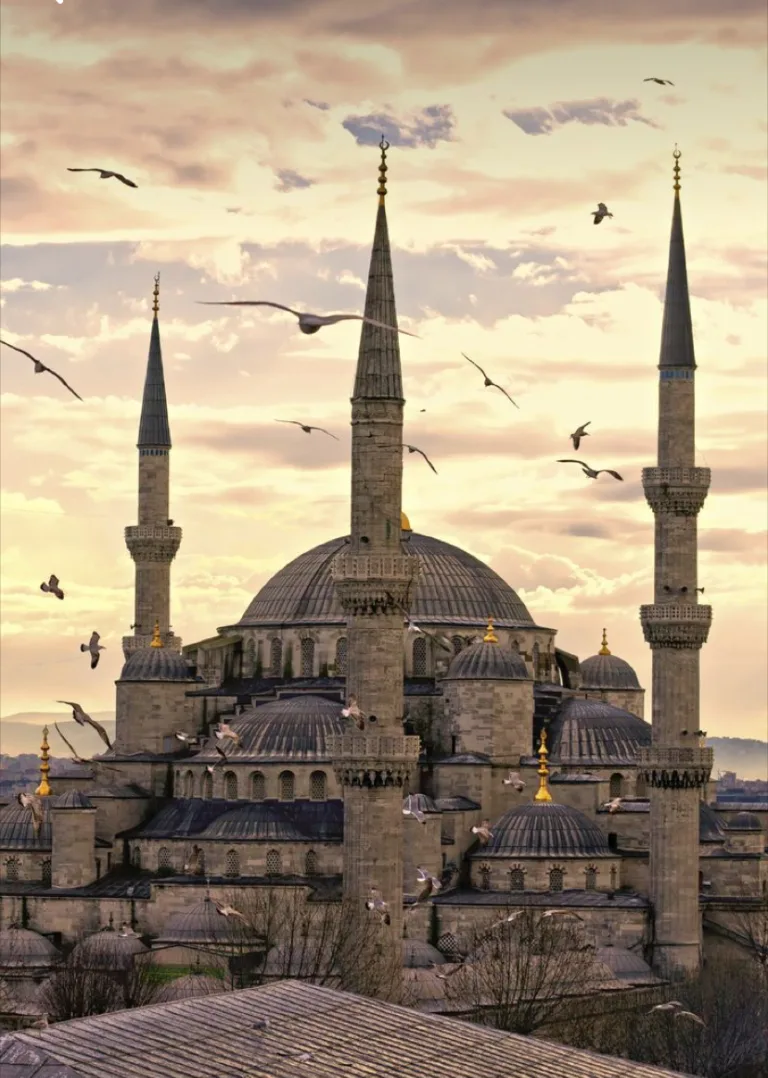
7.Turkey
Turkey is one of the countries with the richest histories in the world. Its strategic location at the crossroads of Europe and Asia has made it a melting pot of civilizations and cultures over millennia.
Ancient Civilizations
- Anatolian Civilizations: Ancient Anatolia (modern day Turkey) was home to numerous civilizations, including the Hittites, Phrygians, and Urartians. The Hittite Empire (c. 1600–1178 BCE) was one of the major powers in the ancient Near East, known for its advancements in law, administration, and warfare.
- Troy: The ancient city of Troy, immortalized in Homer’s “Iliad,” is located in Turkey. Archaeological excavations have revealed the layers of this ancient city, providing insights into Bronze Age civilizations.
Classical Antiquity
- Greek and Hellenistic Periods: Western Anatolia was colonized by Greek settlers and became a vital part of the Greek world. Cities like Ephesus, Smyrna (modern İzmir), and Pergamon were centers of culture and learning during the Hellenistic period following Alexander the Great’s conquests.
- Roman and Byzantine Empires: Anatolia was incorporated into the Roman Empire in the 2nd century BCE and later became the heartland of the Byzantine Empire (Eastern Roman Empire) after the fall of Rome. Constantinople (modern Istanbul) was established by Emperor Constantine the Great as the new capital of the Roman Empire in 330 CE and remained a major center of Christianity and civilization.
Medieval and Early Modern Periods
- Seljuk Empire: The Seljuk Turks established a powerful empire in Anatolia in the 11th century. They left a significant cultural and architectural legacy, including the construction of mosques, madrasas (schools), and caravanserais (roadside inns).
- Ottoman Empire: The Ottoman Empire, founded by Osman I in the late 13th century, rose to become one of the most powerful and enduring empires in history. At its height in the 16th and 17th centuries, the Ottoman Empire spanned three continents, encompassing much of Southeast Europe, Western Asia, and North Africa. The Ottomans were known for their military prowess, architectural achievements (e.g., Hagia Sophia, Topkapi Palace), and contributions to arts, science, and administration.
Cultural and Scientific Achievements
- Islamic Golden Age: During the Ottoman period, Turkey was a center of learning and culture. Scholars, architects, and artists made significant contributions to various fields, including mathematics, astronomy, medicine, and literature. The architectural works of Mimar Sinan, the chief Ottoman architect, are particularly noteworthy.
- Art and Literature: Ottoman art and literature flourished with unique styles in calligraphy, miniature painting, and poetry. The Divan literature of this period, influenced by Persian and Arabic traditions, produced many renowned poets such as Rumi and Yunus Emre.
Modern History and Influence
- Republic of Turkey: Following the collapse of the Ottoman Empire after World War I, Mustafa Kemal Atatürk led the Turkish War of Independence, resulting in the establishment of the Republic of Turkey in 1923. Atatürk’s reforms modernized Turkey, transforming it into a secular, industrial nation.
- Economic and Cultural Growth: In recent decades, Turkey has experienced significant economic growth and modernization. It continues to be a cultural bridge between the East and West, influencing global cuisine, music, cinema, and literature.
Cultural Heritage and Preservation
- UNESCO World Heritage Sites: Turkey is home to numerous UNESCO World Heritage Sites, including the archaeological sites of Troy, Ephesus, and Göbekli Tepe, as well as the historic areas of Istanbul. These sites reflect the country’s rich and diverse historical heritage.
- Cultural Festivals and Traditions: Turkey’s cultural diversity is evident in its numerous festivals, traditional music, dance, and crafts. The annual Whirling Dervishes Festival in Konya and the vibrant celebrations of Turkish National Festivals showcase the country’s deep rooted traditions.
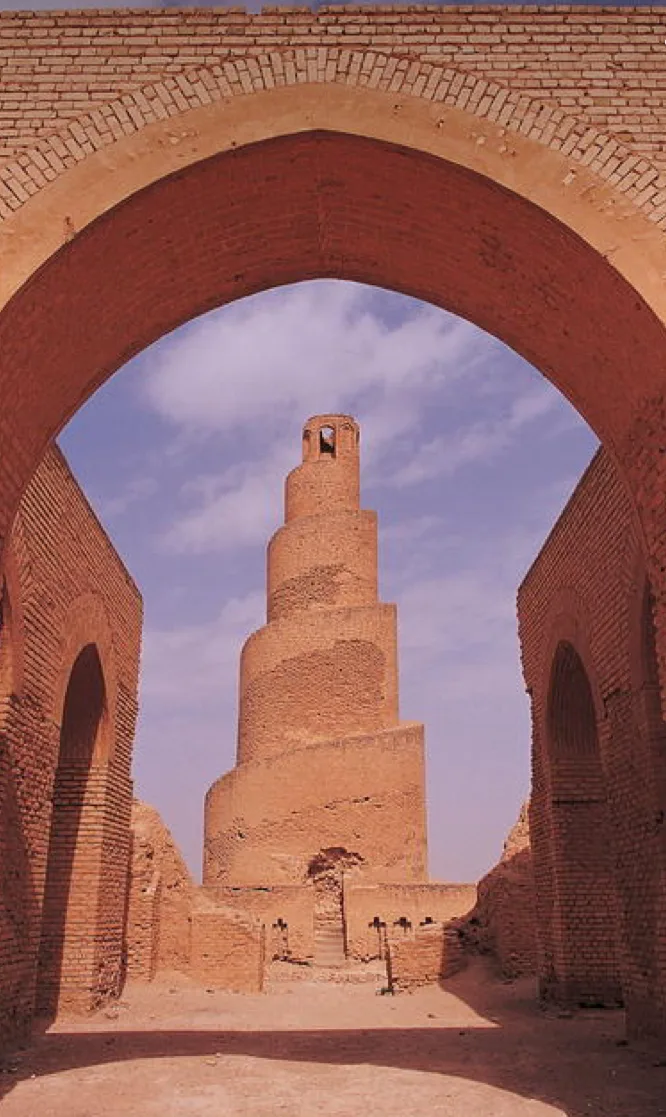
8.Iraq
Iraq is undoubtedly one of the countries with the richest histories in the world. Known as Mesopotamia in ancient times, it is often referred to as the “Cradle of Civilization.” Its long and storied past has profoundly influenced global culture, science, religion, and politics.
Ancient Civilizations
- Sumerian Civilization: The Sumerians, who inhabited southern Mesopotamia around 4500 BCE, are credited with many firsts in human history, including the development of writing (cuneiform), the wheel, and the earliest known city states such as Ur and Uruk.
- Akkadian Empire: The Akkadian Empire (c. 2334–2154 BCE), founded by Sargon the Great, was the world’s first empire, uniting various city states under a centralized government and spreading Akkadian culture and language.
- Babylonian Empire: The Babylonians, under King Hammurabi (c. 1792–1750 BCE), are known for the Code of Hammurabi, one of the earliest and most complete written legal codes. Babylon later became a center of culture and learning, especially during the reign of Nebuchadnezzar II (c. 605–562 BCE), who commissioned the construction of the Hanging Gardens, one of the Seven Wonders of the Ancient World.
- Assyrian Empire: The Assyrians (c. 2500–609 BCE) established one of the most powerful empires in ancient Mesopotamia, renowned for their military prowess, architectural achievements (such as the city of Nineveh), and contributions to art and scholarship.
Cultural and Scientific Contributions
- Astronomy and Mathematics: Ancient Mesopotamians made significant advances in astronomy and mathematics, including the development of a base-60 number system, which led to the 60-minute hour and the 360-degree circle.
- Literature: Mesopotamia produced some of the earliest literary works, including the “Epic of Gilgamesh,” which is one of the oldest known stories in the world, addressing themes of heroism, friendship, and the quest for immortality.
Classical and Medieval Periods
- Persian and Hellenistic Influence: After the fall of the Babylonian Empire, Mesopotamia came under the control of the Achaemenid Persian Empire (c. 550–330 BCE) and later Alexander the Great, whose campaigns spread Hellenistic culture throughout the region.
- Islamic Golden Age: During the Abbasid Caliphate (750–1258 CE), Baghdad became one of the most important centers of learning and culture in the world. The House of Wisdom in Baghdad was a renowned intellectual hub where scholars translated and preserved the works of Greek, Persian, and Indian scholars, making significant advances in science, medicine, mathematics, and philosophy.
Modern History and Influence
- Ottoman Empire and British Mandate: From the 16th century until the end of World War I, Iraq was part of the Ottoman Empire. After the war, it became a British mandate until gaining independence in 1932.
- 20th and 21st Centuries: The discovery of vast oil reserves transformed Iraq’s economy but also led to significant political challenges, including coups, wars, and international conflicts. The Iran-Iraq War (1980–1988), the Gulf War (1990–1991), and the Iraq War (2003–2011) have profoundly affected the country’s modern history.
Cultural Heritage and Preservation
- Archaeological Sites: Iraq is home to numerous archaeological treasures, including the ruins of ancient cities such as Babylon, Ur, and Nineveh. These sites offer invaluable insights into the early development of human civilization.
- UNESCO World Heritage Sites: Important cultural heritage sites in Iraq include the ancient city of Ashur, the fortress city of Erbil, and the Samarra Archaeological City. These sites are recognized for their historical and cultural significance.
- Cultural Resilience: Despite modern conflicts and challenges, Iraq’s cultural heritage remains vibrant. Traditional music, literature, and crafts continue to be important aspects of Iraq life, and efforts to preserve and restore historical sites are ongoing.
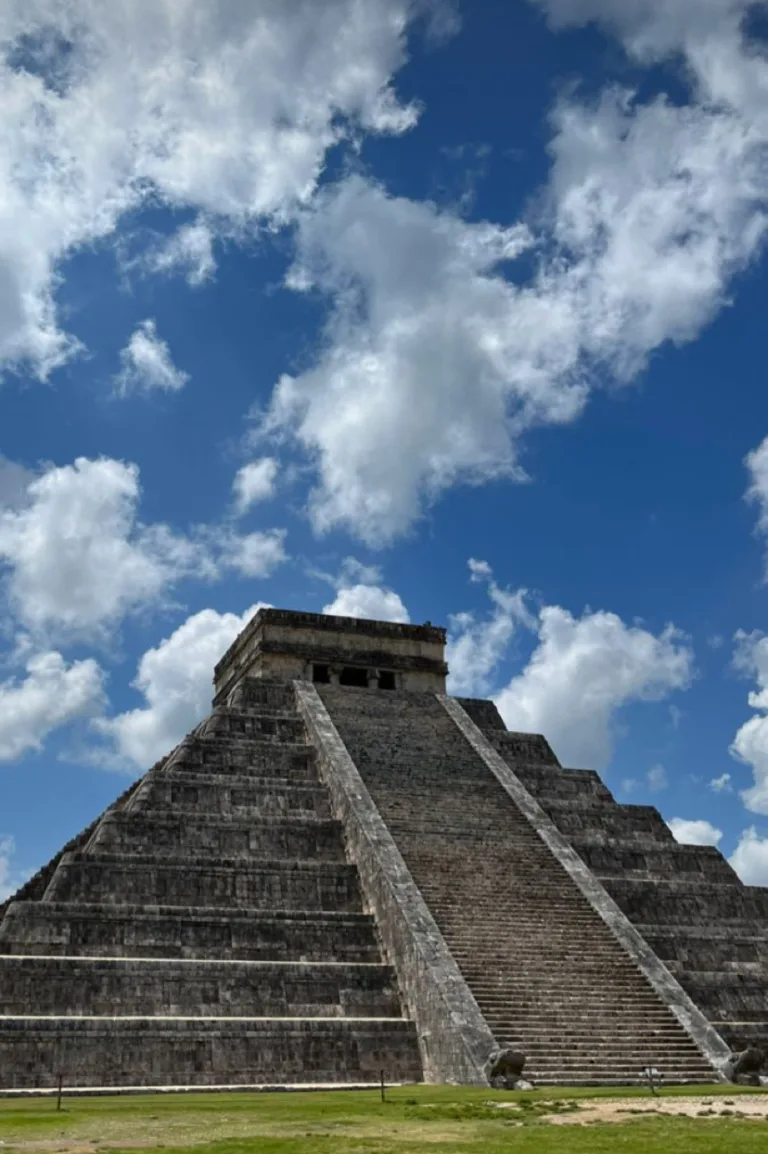
9.Mexico
Mexico is one of the countries with the richest histories in the world. Its long and complex history, marked by the rise and fall of powerful civilizations, colonization, and the fight for independence, has left a profound impact on global culture, art, science, and politics.
Ancient Civilizations
- Olmec Civilization: Often considered the “mother culture” of Mesoamerica, the Olmecs (c. 1200–400 BCE) are known for their colossal head sculptures and advancements in agriculture, writing, and urban planning.
- Maya Civilization: The Maya civilization (c. 2000 BCE–16th century CE) was one of the most advanced in the Americas, known for its sophisticated writing system, astronomical knowledge, and architectural achievements, including the cities of Tikal, Palenque, and Chichen Itza.
- Teotihuacan: This ancient city, at its height between 100 BCE and 650 CE, was one of the largest cities in the world. It is renowned for its massive pyramids, such as the Pyramid of the Sun and the Pyramid of the Moon, and its influence on later Mesoamerican cultures.
- Aztec Empire: The Aztec Empire (c. 1428–1521 CE), with its capital at Tenochtitlan (modern day Mexico City), was a powerful and sophisticated state known for its impressive architecture, intricate social organization, and military prowess. The Aztecs made significant contributions in agriculture, including the development of chinampas (floating gardens).
Cultural and Scientific Contributions
- Mathematics and Astronomy: Mesoamerican civilizations, particularly the Maya, made significant advancements in mathematics and astronomy. They developed a complex calendar system and had a deep understanding of celestial movements.
- Art and Architecture: Ancient Mexican civilizations produced remarkable art and architecture, including monumental pyramids, temples, intricate stone carvings, pottery, and vibrant murals. These artistic traditions have influenced Mexican culture for centuries.
Colonial Period
- Spanish Conquest: The Spanish conquest of the Aztec Empire in 1521, led by Hernán Cortés, marked the beginning of the colonial period. The Spanish established New Spain, which included modern day Mexico, and introduced Christianity, European architecture, and new agricultural practices.
- Mestizo Culture: The colonial period saw the blending of indigenous, African, and European cultures, resulting in a rich and diverse mestizo culture. This cultural fusion is evident in Mexican cuisine, music, art, and traditions.
Independence and Modern History
- War of Independence: Mexico gained independence from Spain in 1821 after a decade long war initiated by figures like Miguel Hidalgo and José María Morelos. The fight for independence was fueled by social and economic inequalities.
- Revolution and Reform: The Mexican Revolution (1910–1920) was a major social and political upheaval that sought to address the deep inequalities and injustices in Mexican society. Leaders like Emiliano Zapata and Pancho Villa fought for land reform and workers’ rights. The revolution led to the establishment of the current Mexican constitution in 1917.
Cultural Heritage and Preservation
- UNESCO World Heritage Sites: Mexico is home to numerous UNESCO World Heritage Sites, including ancient cities like Teotihuacan, Chichen Itza, and Palenque, as well as colonial cities like Oaxaca and Guanajuato. These sites reflect the country’s rich historical and cultural heritage.
- Festivals and Traditions: Mexican culture is celebrated through various festivals and traditions, such as Day of the Dead (Día de los Muertos), which honors deceased loved ones with elaborate altars, food, and ceremonies. Other significant festivals include Cinco de Mayo and Mexican Independence Day.
Contemporary Influence
- Art and Literature: Mexico has a vibrant cultural scene, with influential artists such as Diego Rivera, Frida Kahlo, and José Clemente Orozco, who are renowned for their murals and paintings that reflect Mexican identity and social issues. Mexican literature, represented by writers like Octavio Paz and Carlos Fuentes, has made significant contributions to world literature.
- Cuisine: Mexican cuisine, known for its bold flavors and diverse ingredients, has been recognized as an intangible cultural heritage by UNESCO. Dishes like tacos, tamales, mole, and guacamole are enjoyed worldwide.
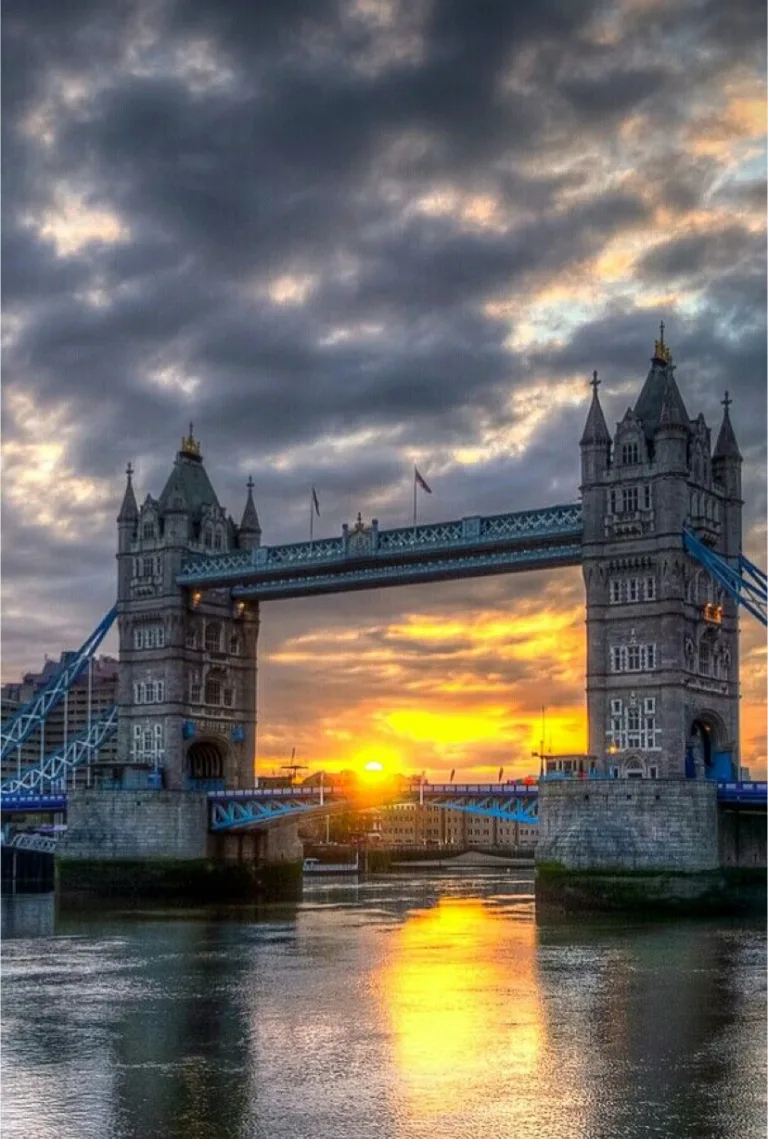
10.United Kingdom
The United Kingdom is one of the countries with the richest histories in the world. Its long and diverse history has profoundly influenced global culture, politics, science, and economics.
Ancient and Medieval History
- Prehistoric Britain: The history of the UK dates back to prehistoric times, with significant sites such as Stonehenge (c. 3000–2000 BCE) indicating advanced understanding of astronomy and engineering by Neolithic peoples.
- Roman Britain: The Romans invaded Britain in 43 CE and established a province that lasted until around 410 CE. They introduced urbanization, roads, baths, and Hadrian’s Wall, which marked the northern boundary of the Roman Empire in Britain.
- Anglo-Saxon and Viking Periods: After the Romans, the Anglo-Saxons established several kingdoms, and their era saw the spread of Christianity and the creation of influential texts like the epic poem “Beowulf.” The Viking invasions starting in the late 8th century further shaped the cultural and political landscape.
- Norman Conquest: In 1066, William the Conqueror’s victory at the Battle of Hastings led to the Norman Conquest of England. The Normans brought feudalism, built iconic structures like the Tower of London, and initiated significant changes in governance and land ownership.
Development of the Monarchy and Political Institutions
- Magna Carta: In 1215, King John signed the Magna Carta, a foundational document that limited royal power and established principles of legal rights and due process, influencing constitutional developments worldwide.
- Parliamentary Evolution: Over centuries, the UK developed one of the world’s oldest continuous parliamentary systems. The establishment of the English Parliament in the 13th century and subsequent political struggles, such as the English Civil War (1642–1651) and the Glorious Revolution (1688), gradually shifted power from the monarchy to Parliament.
The British Empire
- Colonial Expansion: Beginning in the 16th century, the UK established colonies and trading posts around the world, creating the British Empire, the largest empire in history by the 19th and early 20th centuries. The empire played a crucial role in spreading British culture, language, legal systems, and technological advancements globally.
- Industrial Revolution: The UK was the birthplace of the Industrial Revolution in the late 18th century, which transformed society with innovations in machinery, manufacturing, and transportation. This era brought about significant economic growth, urbanization, and social change.
Cultural and Scientific Contributions
- Literature: The UK has a rich literary tradition, producing some of the greatest writers in history, including William Shakespeare, Geoffrey Chaucer, Jane Austen, Charles Dickens, and J.K. Rowling. British literature has profoundly influenced global culture and language.
- Science and Innovation: British scientists and inventors have made groundbreaking contributions to science and technology. Figures like Isaac Newton, Charles Darwin, James Clerk Maxwell, and Stephen Hawking have advanced our understanding of the natural world and the universe.
- Music and Arts: The UK has been a cultural powerhouse in music, producing influential genres and artists from classical composers like Henry Purcell to contemporary bands like The Beatles, The Rolling Stones, and Adele. The British art scene has also been influential, with iconic figures such as J.M.W. Turner and Damien Hirst.
Modern History and Global Influence
- World Wars: The UK played a crucial role in both World War I and World War II, with significant contributions to the Allied victories. The wars had profound effects on British society, economy, and global standing.
- Post-War Era and Decolonization: After World War II, the UK underwent significant social and economic changes, including the establishment of the National Health Service (NHS) and the welfare state. The decolonization process saw the independence of many former colonies, reshaping the British Empire into the Commonwealth of Nations.
- European Union and Brexit: The UK joined the European Economic Community (later the European Union) in 1973, influencing and being influenced by European policies and integration. In 2016, a referendum resulted in the decision to leave the EU, a process known as Brexit, which was completed in 2020, marking a significant shift in the UK’s political and economic landscape.
Cultural Heritage and Preservation
- UNESCO World Heritage Sites: The UK is home to numerous UNESCO World Heritage Sites, including Stonehenge, the Tower of London, the historic cities of Edinburgh and Bath, and the natural beauty of the Lake District and Giant’s Causeway.
- Museums and Institutions: The UK boasts world renowned museums and cultural institutions, such as the British Museum, the National Gallery, the Natural History Museum, and the British Library, which preserve and showcase the country’s rich heritage and global contributions.

